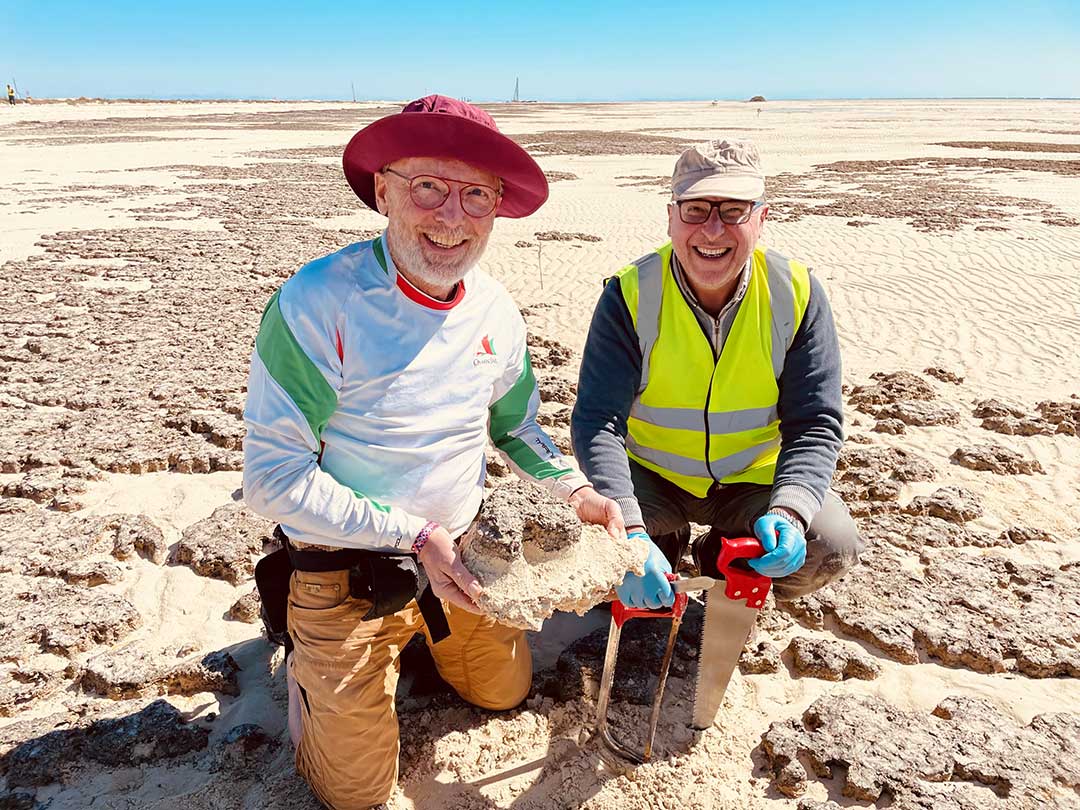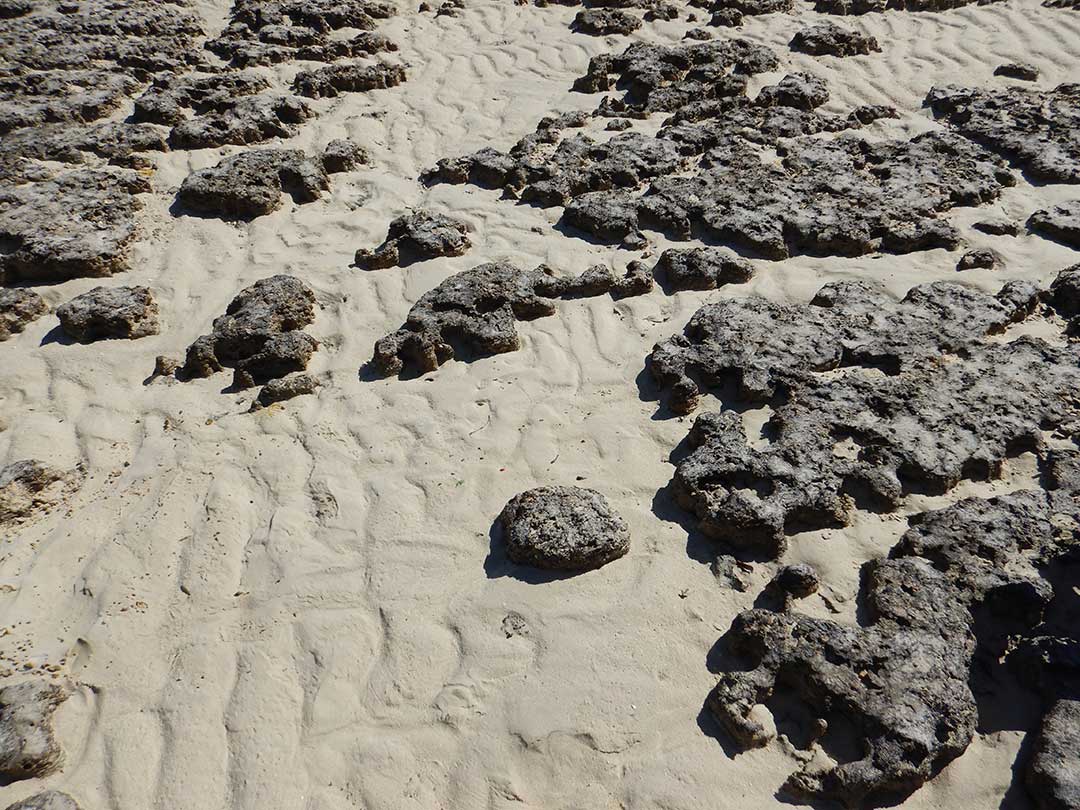A rare discovery in the Red Sea hints at how life first formed

Vahrenkamp (left) and Daffonchio at the field site.
KAUST researchers have discovered a rare bio-sedimentary formation off Sheybarah Island in the Red Sea, which is the location of a major tourist giga-project in Saudi Arabia. The bio-structures, spanning an area of five hectares, represent only the second group of living stromatolites ever found in normal marine settings. The study can be read in Geology.
Stromatolites are viewed as fossils of the first life on earth that emerged some 3.4 billion years ago. Then common, they are nowadays rare and found only in extreme environments, such as salt lakes and hypersaline lagoons. They are microbial carbonates that are believed to have generated oxygen in the atmosphere, which transformed the Earth’s atmosphere to eventually support life as we know it. The oxygen is typically produced by photosynthetic microbes called cyanobacteria. The study found a complex and diverse community of microbes inhabiting the Sheybarah stromatolites, including the discovery of reticulated filaments, which were previously only known to be found in caves. This is the first time such filaments have been observed in stromatolites existing in a daylight environment.
The reticulated filaments are just one of several unusual properties of the Sheybarah stromatolites.
"These stromatolites live in an environment rich in biodiversity. This is unlike other stromatolites, which live in more restricted environments with less diverse life," said KAUST Professor Volker Vahrenkamp, who led the study.

Some of the stromatolites found on the island
An additional analysis led by KAUST Professor Daniele Daffonchio revealed that the discovered stromatolites share an "astonishingly" similar microbial composition with the only other living stromatolites known in a normal marine environment, which exist in the Atlantic Ocean in the Bahamas.
While the study only reflects an initial stage of the research, the KAUST team has already been contacted by scientists affiliated with the Mars mission, since the existence of stromatolites on Mars would give evidence of an early oxygen atmosphere there, and understanding them on Earth would provide insight on how, if ever, life formed on Mars.
Volker added that they may also give value to the exclusive tourism development currently being built near Sheybarah Island, as they will provide a unique educational exhibit on how life first began on Earth.

